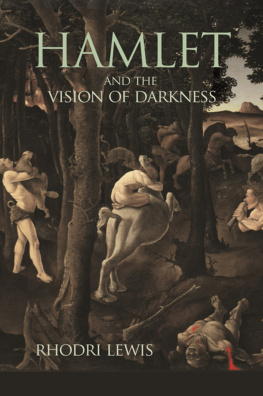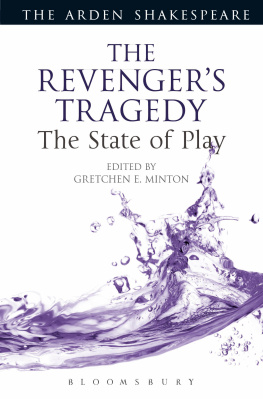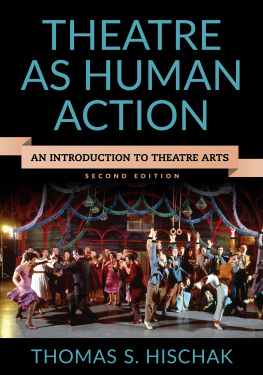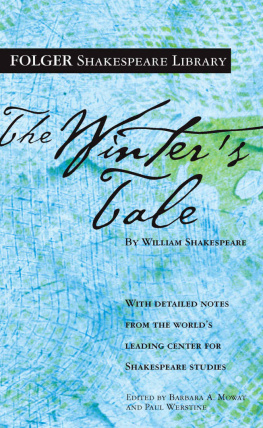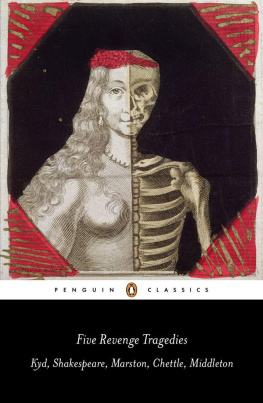NEW MERMAIDS
General editors:
William C. Carroll, Boston University
Brian Gibbons, University of Mnster
Tiffany Stern, University of Oxford

Reconstruction of an Elizabethan Theatre by C. Walter Hodges
NEW MERMAIDS |
The Alchemist | The Old Wifes Tale |
All for Love | The Playboy of the Western World |
Arden of Faversham | The Provoked Wife |
Arms and the Man | Pygmalion |
Bartholmew Fair | The Recruiting Officer |
The Beaux Stratagem | The Relapse |
The Beggars Opera | The Revengers Tragedy |
The Changeling | The Rivals |
A Chaste Maid in Cheapside | The Roaring Girl |
The Country Wife | The Rover |
The Critic | Saint Joan |
Doctor Faustus | The School for Scandal |
The Duchess of Malfi | She Stoops to Conquer |
The Dutch Courtesan | The Shoemakers Holiday |
Eastward Ho! | The Spanish Tragedy |
Edward the Second | Tamburlaine |
Elizabethan and Jacobean Tragedies | The Tamer Tamed |
Epicoene or The Silent Woman | Three Late Medieval Morality Plays |
Every Man In His Humour | Mankind |
Gammer Gurtons Needle | Everyman |
An Ideal Husband | Mundus et Infans |
The Importance of Being Earnest | Tis Pity Shes a Whore |
The Jew of Malta | The Tragedy of Mariam |
The Knight of the Burning Pestle | Volpone |
Lady Windermeres Fan | The Way of the World |
London Assurance | The White Devil |
Love for Love | The Witch |
Major Barbara | The Witch of Edmonton |
The Malcontent | A Woman Killed with Kindness |
The Man of Mode | A Woman of No Importance |
Marriage A-La-Mode | Women Beware Women |
A New Way to Pay Old Debts |
Bloomsbury Methuen Drama
An imprint of Bloomsbury Publishing Plc
50 Bedford Square
London
WC1B 3DP
UK | 1385 Broadway
New York
NY 10018
USA |
www.bloomsbury.com
First New Mermaid edition published 1967
Ernest Benn Limited 1967
Second edition published 1991
A & C Black Publishers Limited 1991
Bloomsbury Publishing 2008
Reprinted 2008, 2009 (twice), 2010, 2013 (twice)
All rights reserved. No part of this publication may be reproduced or
transmitted in any form or by any means, electronic or mechanical, including
photocopying, recording, or any information storage or retrieval system,
without prior permission in writing from the publishers.
Brian Gibbons has asserted his right under the Copyright, Designs and
Patents Act, 1988, to be identified as Author of this work.
No responsibility for loss caused to any individual or organization
acting on or refraining from action as a result of the material in this
publication can be accepted by Bloomsbury or the author.
Visit www.bloomsbury.com to find out more about our authors and their books
You will find extracts, author interviews, author events and you can sign up for
newsletters to be the first to hear about our latest releases and special offers.
British Library Cataloguing-in-Publication Data
A catalogue record for this book is available from the British Library.
eISBN-13: 978-1-4081-4476-3
Library of Congress Cataloging-in-Publication Data
A catalog record for this book is available from the Library of Congress
CONTENTS
DEDICATION
In Memory of
Laurence Jagger
The Revengers Tragedy (1607) shows a brilliant court culture against a sombre background; although fashionably Italianate in appearance, the play is concerned with substantial issues in the Britain of King James I. This new kings court soon became popularly notorious for luxurious display, putting on exclusive, expensive, spectacular masques, fashionable clothes in silk and silver, glamorous feasts and torchlight revels; there were serious scandals, and poets and playwrights attacked the rumoured sexual and political corruption in high places.
By 1607 revenge tragedy had already developed as a hybrid form incorporating complex intrigue plots and elements of farce, but this play is one of a new wave (including Antonios Revenge and The Tragedy of Hoffman) increasingly interested in presenting scenes of horror. The hero Vindice is eloquent and engagingly witty, and a brilliantly fast-moving contriver of plots, but as a poet he sees the skull beneath the skin, and as a revenger he carries out some of the cruellest killings in all English Renaissance tragedy. The play proves highly successful in present-day performance, both professional and amateur, and in a variety of period settings.
The play was entered in the Stationers Register on 7 October 1607 without an author being named: Twoo plaies th one called the revengers tragedie th other. A trick to catche the old one. The play was first attributed to Cyril Tourneur in 1656 by Edward Archer in a play-list, and Frances Kirkman followed suit in two play-lists in 1661 and 1671. Most recent academic opinion however has attributed the play specifically to Thomas Middleton, on the basis of certain features of language and spelling common to The Revengers Tragedy and works by Middleton. There is no contemporary evidence for attribution to Middleton; the title-page declares that The Revengers Tragedy was performed by the Kings Men, whereas all Middletons known plays printed before 1608 were written for the companies of boy actors. The plays affinity with Marstons works, in terms of dramatic style, tone, and subject-matter, does seem close, but insufficiently conclusive for attribution to him. A case has been made for linking the plays peculiarities of spelling to those of The Atheists Tragedy, the one play firmly attributed to Tourneur. The limited strength of these authorship claims, and the absence of external evidence until 1656, suggest that the question of the plays authorship remains undecided. Readers wishing to pursue the matter of authorship in detail should consult the works by R. A. Foakes, D. J. Lake and McD. P. Jackson in the list of Further Reading. Whoever the author may have been, he shows a distinct intelligence and zest - perhaps of youth - in this unique response to a cultural moment, and a phase in the Jacobean theatre, with Hamlet, The Malcontent, Measure for Measure, Volpone and King Lear all recently performed, and A Trick to Catch the Old One recently written. The mystery of his identity, if accidentally caused, seems consonant with the mood of his play; and there is always the possibility that he had a reason for remaining anonymous.
Next page








